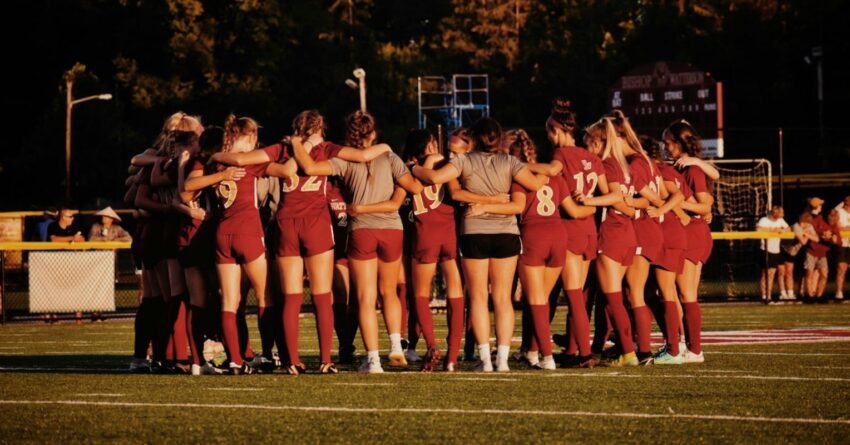Sports is big business—according to Barron’s, upwards of a trillion dollars. That is a lot of money. CNBC reports that a stack of 1 trillion dollar bills would add up to 67,866 miles and could circle Earth 2.72 times. But enough about the financial aspect of sports—I have heard too many people use the money component to get turned off by sports. Still others describe themselves as not being a sports person or an athlete. Yet we are in these bodies that need exercise to survive and thrive. In fact, there are more mental, social, and physical benefits to participating in sports than you may realize.
Let’s take a look at one of the biggest years in life that herald the greatest change and associated stress. No, I am not going to point to the first year of life, although that is a year full of significant change and extreme physical development that demonstrates the importance of exercise from the start.
Instead, I am going to address 11th grade in school. Students in 11th grade are typically 16 to 17 years of age, facing long-term plans that may involve college and most often include leaving home. They are transitioning from living as children in a family unit to being thrust into the world to land on their own two feet. They need to make decisions and choices that will affect the trajectory of their life. However, the choices are based on unknowns. As the saying goes, you can’t know what you don’t know.
This period is scary, exciting, and stressful. Yet researchers have found some interventions that give 11th graders a leg up in effectively transitioning to college and adult life.
If you are guessing sports, you are right. (I did kind of give that one away.)

Source: Leah Hetteberg/Unsplash
How Much Activity Is Enough?
Knifsend and Juvonen (2022) provide valuable data from their research, pinpointing the right amount of activity—the sweet spot—for best benefiting high school juniors. They looked at the number and diversity of extracurricular activities (including sports) and found that students who had participated in sports and one other activity fared the best. The well-being measures showed that these students had less loneliness, less social anxiety, less depression, and higher self-worth. Moreover, these psychosocial benefits remained years after, through their college and early adult years.
Another positive finding was that these benefits remained regardless of socioeconomic status and ethnicity or race. The authors did, however, note that socioeconomic and ethnicity-race factors could be an issue when discrimination and microaggressions exist on teams or students do not have free time due to familial demands at home.
How Much Is Too Much?
A downside to sports and extracurricular activities is when a person takes on too many. The researchers found that the magic number that constitutes too much: When burdened with a range of three to four different activities, students’ social anxiety increased, depression increased, loneliness increased, and self-worth was reduced.
Researchers speculate that some of the benefits of extracurricular activities are social learning and experience with teamwork. Exercise has also been shown to relieve depression and increase the positive effects of endorphins, along with sustaining overall health.
The issue of youth participation in sports is so important that the U.S. government has implemented a program called Healthy People 2030, aimed at increasing sports participation among youth. The goal is to increase youth sports engagement to 63.3 percent by 2030. Perhaps not surprisingly, participation dropped from 58.4 percent in 2016–2017 to 50.7 percent in 2020–2021 (during the pandemic).
With the Paris Summer Olympics just behind us and Los Angeles preparing for the Summer Olympics in 2028, perhaps young people will be inspired to try sports. After all, Hollywood has a long history of inspiring dreams, hope, grit, heroes, and happy endings.
